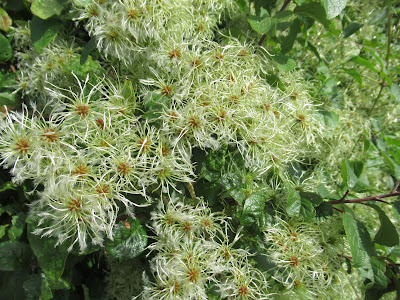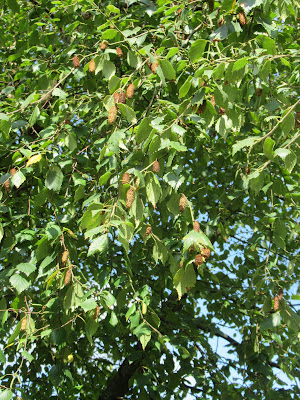Goodbye Summer
Goodbye Summer : Do svidanya Leto, the only words I now remember from a short course in Russian I took about forty years ago.
Do svidanya. It has a smooth, honey-like sound, redolent of the buzz of bees, harvest time, but also the sadness of a passing season.
The warm late spring this year, followed by good rains and then warmth again, brought on a tremendous growth of plants. The combination of various factors over the past twelve months has resulted in bumper crops of fruit and nuts. Not everywhere, and not every sort, but many trees and shrubs are laden.
GONE...Hazel nuts
The squirrels get to the nuts before they are ripe!
NOW...
No wonder the birds have deserted our gardens after rearing their young. They are off blackberrying!
There are a lot of acorns this year.
Old Man's Beard, the fluffy seeds of Clematis.
Rowan berries are very popular with Blackbirds and the Thrushes.
Guelder Rose. The shiny berries are very attractive but don't last long.
Dog Rose.
When I was a kid in the war we were encouraged to pick rose hips for vitamin-C-rich syrup as a supplement to the concentrated orange juice issued free to pre-school children. We were paid 6d (=15p) a pound when we took them to the Town Hall. That was useful money in those days but it took an awful lot of rose hips to make a pound weight! The boys at school had a more popular use for them. The seeds within the hips were packed in fine hairs: very effective itching powder when the boys delighted in shoving the seeds down the girls’ backs, so there were a few days of mayhem , with much hilarity and squealing , in the playground in the autumn term.
Beech.
Although walking under big beech trees is very crunchy now, that’s because we’re walking on last year’s huge crop of old beech seed cases and dead leaves. We haven’t seen anything in the way of seed this year, though it’s perhaps a bit early yet.
Birch catkins explode in a blizzard of tiny seeds now.
Sloes make a good Christmas tipple when infused in gin for a twelvemonth.
TO COME....
Sweet Chestnuts
In a good year we get a good crop from this Roman-introduced Mediterranean tree but it's a laborious task to get the edible nut from all its wrappings.
The prickly cases of Sweet Chestnut are their first line of defence.
Redwings will gorge in Yew berries when they arrive from Scandinavia soon.
Ivy berries, last to ripen, provide bird food in late winter.
Bugs
The name Bugs loosely describes all sorts of small creatures, an Americanism that has crossed the Atlantic and is now even infantilized as ‘Mini Beasts’.
True bugs are insects, with external hard chitinous skeletons, a head, thorax (to which their six legs and wings if present, are attached, and then an abdomen.
They are not in the same group as Beetles. Unlike most insects which have a metamorphosis from egg to larva, to pupa or chrysalis and then to adult, Bugs only have a partial metamorphosis, going from egg to nymph or juvenile stage with 4 or 5 instars or changes of skin as they grow, to then becoming fully adult. Some suck the juices from animals, others from plants.
Bug or Bed Bug still has unpleasant associations. I remember my mother pursing her lips and linking them with poor and insanitary households. A worse visitation even than human fleas.
As recently as 1980 I was in hospital (now demolished) in Plymouth when the word ‘Bug!’ went round and our beds were shuffled while a man sprayed all the nooks and crannies(not ours , but the ward and corridors) with heaven-knows what.
Shield Bugs
Shield Bugs , a separate group within the family of Bugs, are noticeable this time of the year. I had the unpleasant experience when picking blackberries and eating them as I picked, and without noticing, a Shield Bug was on one . I immediately had a frightful bitter taste in my mouth as it must have exuded some nasty substance in its alarm. That is perhaps what also gives them their alternative name of ‘Stink Bug’.
Their upper wings which like beetles are the strengthened wing covers, are shield-shaped with the end furthest from the body transparent and un-strengthened; hence their name.
Shield Bugs feed throughout their lives on the sap and juices of plants and fruit.
 |
| Green Shield Bug nymph. |
 |
| Sloe (or Hairy,)Shield Bug (Picture thanks to Linda Scott) |













No comments:
Post a Comment